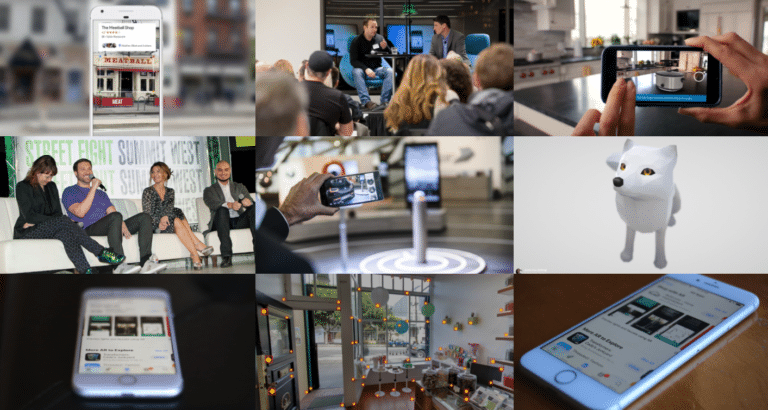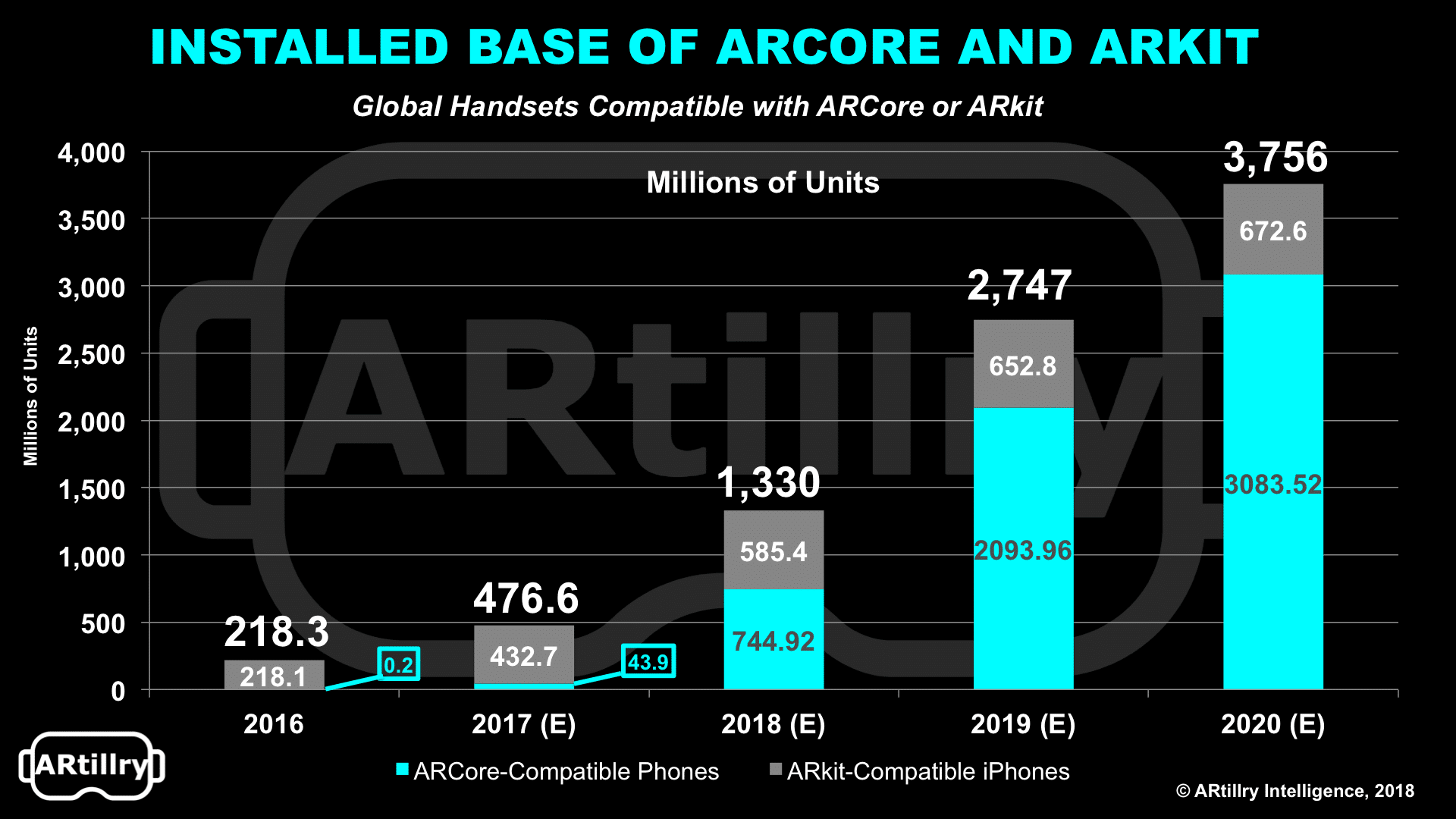
This post is excerpted from ARtillry’s latest Intelligence Briefing: Mobile AR: App Strategies and Business Models. It includes some of its data and takeaways. More can be previewed here and subscribe to access the full report.
AR’s early stages compel consumer acclimation and education. This means that before being deployed in standalone apps, AR features can sometimes gain momentum through “training wheels,” such as incubation within established apps.
Three apps exemplify this strategy: Snapchat, Amazon and Pokémon Go. These have received considerable traction, and each did so by launching AR as a feature rather than a standalone app. Snapchat for example offers AR selfie lenses as a value-added feature, rather than a core function.
Amazon’s AR View lets shoppers visualize products in-home. But rather than a standalone app, it’s a feature in Amazon’s app that has several launch points in the shopping flow, including product pages. As examined earlier, “AR-only” should be the end goal, but incubation could be a stepping-stone.
AR: What to Call It
The other element that’s common to Snapchat and Pokémon Go is that they got nearly a billion people to use AR, without mentioning “AR.” Of course, we all use tech jargon for reference in strategic discussions or news analysis. But consumers don’t care about the alphabet soup.
“I just hate all these terms, and I can’t wait for the moment in time where we just don’t talk about this tech, we just use it,” Super Ventures partner Ori Inbar said recently at an ARiA event. And that’s what consumers have done with Pokémon Go and Snapchat AR lenses… they just use it.
Google uses “immersive computing” to invoke the XR spectrum, which isn’t much better in terms of jargon, but it does trade acronyms for plain language. Ultimately, consumers decide: the terminology that sticks is what the market will bear. People know “mouse” and “link”… not necessarily “GUI.”
As for whether or not Pokémon Go and Snapchat are really AR, it doesn’t matter in a larger sense. Detractors aren’t wrong when they say these apps aren’t “true AR.” But they’re still valuable, as they’ve done AR a favor by validating its mass-market appeal, and by warming people up to it.
“I think one of the craziest debates of the past year was whether Pokémon Go was augmented reality or not,” said Intel’s Chris Croteau at an AR in Action event last year. “The [750 million] people that downloaded that app…none of them care.”
The lesson: Take this to heart when building AR apps. For example, in retail, AR could add value to brand apps (think: in-store navigation, product details, etc.). But in that context or in other business verticals/categories, think strategically about where AR features go and what they’re called.

VR Is a Meal, AR Is a Snack
Beyond where to put AR features and what to call them, there are deeper considerations for native user experiences. For example, switching briefly to VR to illustrate a point, Google has reported that VR session lengths are much longer than mobile apps . The takeaway: design for that reality.
Longer VR sessions stand to reason, as immersion compels sustained periods of play to build up a true sense of presence. That presence can’t be achieved in the short bursts with which we associate mobile apps — things like checking email, news, social updates or scores (a.k.a. “content snacking”).
Though this report isn’t about VR, we bring up that example to compare AR’s relative position in this experiential spectrum. And within that digestive construct, it’s becoming clear that AR – or at least mobile AR – Is more of a snack. It often naturally happens in short bursts.
This has a lot to do with mobile AR’s drawbacks as well as its strengths. For example, the need to hold up a smartphone to experience mobile AR precludes long session lengths with extended arms. That burdens users with tired arms, dangerous (distracted) situations, or just a bad look.
“I can tell you from experience that people don’t do this,” Niantic CTO Phil Keslin said on stage at TechCrunch Disrupt last month. “It’s very unnatural. It makes them look like a total doofus if they’re doing it for an extended period of time.”

Contextual Relevance
Other hardware realities likewise compel experiences that live in short bursts. These include battery life and heat issues from longer AR sessions. If you’ve played with ARkit apps, you may have felt this first hand. And one clear faux pas in mobile app product strategies is to kill users’ batteries.
This boils down to designing app mechanics that involve holding the phone up for short segments. Snapchat and Pokémon Go are exemplars, with most of the AR value derived from media capture that happens quickly. The remaining in-app time involves sharing that media with the phone down.
“In Pokémon Go, the only time they really use it is to share their encounter with the Pokémon,” said Niantic’s Keslin. “To take that one picture is natural….Everybody takes a picture, and then they’re done. It’s not walking around the world with the phone in front of their face.”
The main point is that the form factor should drive developers’ design decisions for mobile AR apps. That will continue to be a moving target as we learn about user behavior, but we’re seeing lessons already. And like with smartphone app tactics, the playbook will evolve rapidly.
For a deeper dive on AR & VR insights, see ARtillry’s new intelligence subscription, and sign up for the free ARtillry Weekly newsletter.
Disclosure: ARtillry has no financial stake in the companies mentioned in this post, nor received payment for its production. Disclosure and ethics policy can be seen here.

